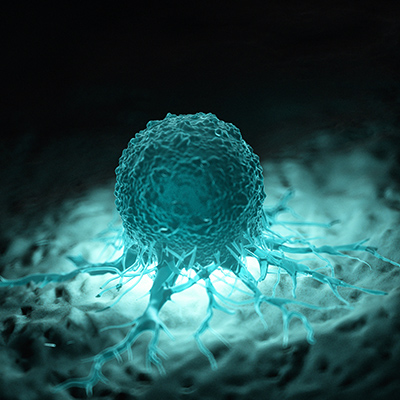November 7, 2022 -- Scripps Research scientists have discovered a key property needed for a promising new class of cancer-fighting drugs -- known as Cereblon E3 Ligase Modulating Drugs (CELMoDs) -- to work effectively as protein degraders.
In a study published November 3 in the journal Science, supported by Bristol Myers Squibb, the scientists found that for these drugs to perform properly they need to cause a critical shape-change in a regulatory protein called cereblon when they bind to it, which could help researchers to better design effective CELMoDs.
Some cancer drugs, including the myeloma drug lenalidomide (Revlimid), work by binding to cereblon and triggering the degradation of key cancer-driving proteins. However, some of these drugs bind tightly to cereblon but fail to cause sufficient degradation of their protein targets.
While scientists have wanted to use high-resolution imaging methods to map cereblon's atomic structure and study its dynamics when bound by CELMoDs, cereblon is a relatively fragile protein that has been difficult to capture using this imaging technique. In their study, the Scripps researchers came up with a way to stabilize cereblon in association with a ubiquitin-system partner protein, enabling them to image it with low-temperature electron microscopy (cryo-EM).
Spearheaded by senior author Gabriel Lander, PhD, professor in the Department of Integrative Structural and Computational Biology at Scripps, the study authors were able to resolve the cereblon structure at near-atomic scale and imaged the cereblon-partner complex with CELMoD compounds and target proteins.
What they discovered was that CELMoDs must bind to cereblon in a way that changes its shape, or conformation, and that cereblon has a default "open" conformation that must be switched to a particular "closed" conformation for the ubiquitin-tagging of target proteins.
"Companies have been developing cereblon-binding protein-degradation drugs that they can see are better degraders, but they didn't know this was because the drugs are better at driving this closed conformation," said first author Edmond R. Watson, PhD, a postdoctoral researcher in the Lander lab at Scripps, in a statement. "So now they know, and they can test their drugs for this key property."
According to Lander, the technique for stabilizing cereblon in preparation for cryo-EM imaging is now being widely adopted by researchers in the field. Going forward, he said his lab wants to support the development of protein-degradation drugs that work by binding to other ubiquitin-proteasome adaptor proteins other than cereblon.
Lander also makes the case that the ability to target endogenous proteins for degradation with small molecules has cleared the way for treating a wide range of diseases, including the very large class of proteins that can't be targeted with traditional drugs.
Copyright © 2022 scienceboard.net








